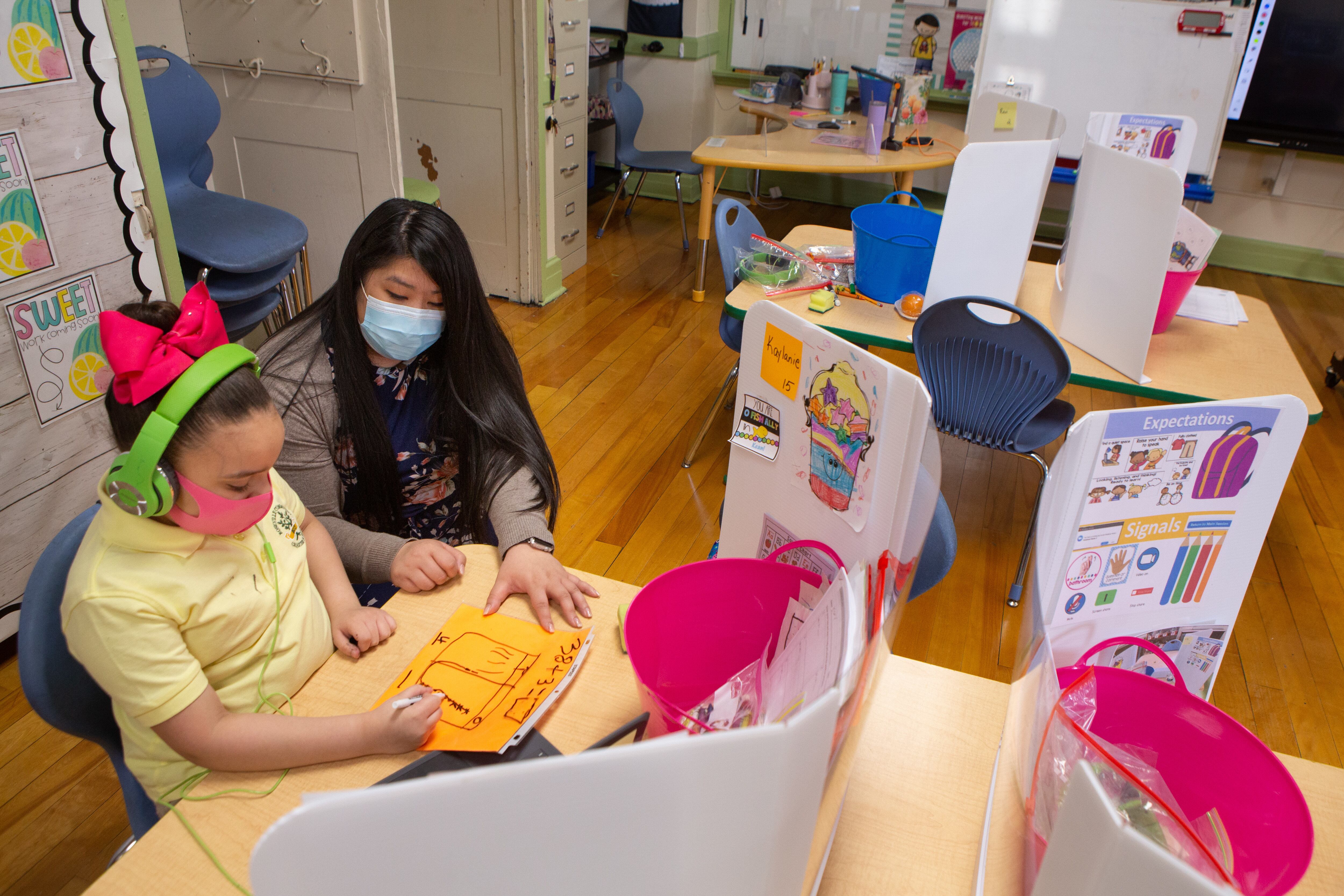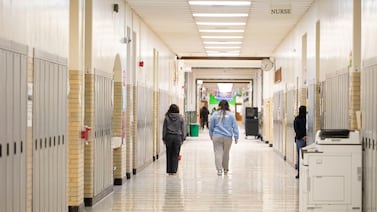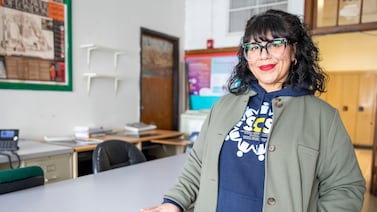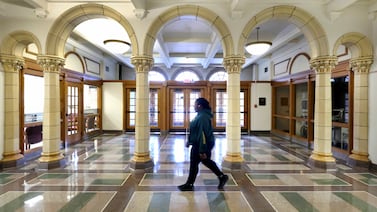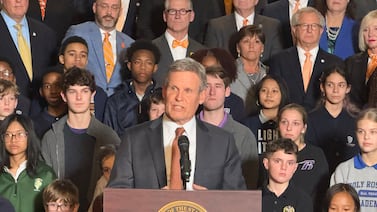Lester Long, the executive director of Classical Charter Schools, has been racing to come up with health and safety rules for the network’s four South Bronx schools, trading emails with other charter leaders, parsing studies he finds in news articles, and checking the Centers for Disease Control and Prevention website.
Long is facing a daunting reality: His schools open on Aug. 18, but public health officials have yet to provide detailed guidance about issues ranging from coronavirus testing to when to quarantine students and staff — rules that will determine how often in-person learning is disrupted this year.
“We’re literally figuring it out by the hour, by the day,” Long said. “There’s an asterisk on everything that we say.”
Lots of charter school leaders followed the city’s lead last year, opting to use the same health and safety measures that were required in city-run schools, many of which share buildings with charters.
Now, as a slew of charters are already opening their doors or plan to do so this month, they are coming up with their own policies without a clear roadmap. The city has been slow to issue guidance, the state health department has declined to provide recommendations, and the federal government’s guidance doesn’t offer precise rules to follow in many situations. The result is a patchwork of policies that differ from school to school.
Interviews with five charter school leaders and a review of a few other networks’ back-to-school plans reveal some significant differences in how they are approaching some key safety measures, including vaccination, testing, closures, and even lunch.
A couple things are consistent, however: All five charter school leaders said they will require all students and staff to wear masks indoors. And with few exceptions, most notably Success Academy, they are generally requiring students to attend in person.
Here’s what you should know about how some charter schools — which enroll 13% of the city’s public school students — are approaching reopening:
Vaccines
Experts widely agree that vaccination is the most important safety measure, since they are highly effective at preventing infection, serious illness, or death.
But charters are taking a wide range of approaches. At one end of the spectrum, Success Academy, the city’s largest charter network, is mandating that all staff be vaccinated.
Other charters are taking a less aggressive approach, at least until the vaccines gain full approval from the Food and Drug Administration. Some are requiring their unvaccinated staff to get regular testing on their own time or requiring that staff use their vacation time if they have to quarantine.
David Noah, principal of the Urban Assembly Charter School for Computer Science in the Bronx, said the vast majority of his staff are vaccinated, but he is meeting with those who have not yet gotten a shot to urge them to do so.
The most common hesitation: “People are saying, ‘I’m wary of this new sort of medical product,’” he said, adding that he expects about 95% of his staff to be vaccinated even without a mandate. (Staff at the city’s traditional public schools must either be vaccinated or submit to weekly coronavirus testing.)
Although students under age 12 are not yet eligible for vaccines, some charters have already launched vaccine drives and other incentives for older students. Arthur Samuels, executive director of Math, Engineering, and Science Academy in Brooklyn, said the high school is offering students $100 Amazon gift cards if they present proof of vaccination.
COVID testing
Regularly testing staff or students can offer important clues about whether other measures — such as masking, ventilation, or social distancing — are working, said Anna Bershteyn, an assistant professor of population health at the NYU Grossman School of Medicine. If it’s offered frequently enough, it can also help stop outbreaks in schools by forcing people to quarantine or prevent transmission in the first place.
By the end of the last school year, the city tested 20% of students and staff each week in district schools, though officials did not provide that same testing to charter schools. In the wake of a lawsuit challenging the exclusion of charter schools, city officials will be required to provide testing to charter school students, but officials have not said when that will launch or what percentage of students will be eligible for testing.
In the meantime, charters are taking varied approaches, with some focusing specifically on unvaccinated staff. Others, including Success Academy, which is already open, are not providing testing to students or staff at all — at least until the city’s program launches (though the network is mandating vaccines for staff).
KIPP, which operates 18 schools in New York City, will test every student in their first week on campus, and then test 10% of students each week as well as every unvaccinated staffer. (KIPP is also operating a small remote program for students with medical issues that put them at greater risk if they contract the coronavirus, officials said.)
Stacey Gauthier, who runs two charter schools in Queens and was a plaintiff in the testing lawsuit, said her schools are still figuring out whether to focus testing on unvaccinated students or simply test everyone randomly. Unvaccinated staff will have to get tested weekly on their own. She’s planning to participate in the city testing program, but there are still lots of questions about how that will work and whether they will need to supplement it with private testing, which costs the school about $15 a test.
In areas where virus transmission is higher, including New York City, the CDC recommends schools offer weekly testing to unvaccinated students and staff. Overall, the guidance says schools can consider a range of testing strategies.
Gauthier said city and state officials should provide clearer instructions rather than leaving it to individual schools. “I did not go to school for public health and this weighs very heavily on me because a wrong decision can have really serious consequences,” she said.
Closures
When to shutter classrooms — or entire school buildings — was among the most hotly contested safety questions last year, as thousands of individual closures disrupted learning, sending students home to learn remotely.
Those rules initially dictated that as few as two virus cases could cause entire schools to shut down, which prompted criticism from experts and some parents, and ultimately were relaxed so that four cases in separate classrooms were needed before buildings could shutter. (Though a single case could still close an individual classroom.)
The closure policies were issued by the city, but some charters decided to follow them, as many share buildings with district schools. City officials have not yet said what quarantine rules district schools will follow. In the meantime, some charters, such as KIPP, are simply following the rules that district schools used at the end of the last school year and will likely adapt to whatever new rules the city deploys. (Education department spokesperson Nathaniel Styer said charter schools will not be required to follow the district’s yet-to-be-announced closure and quarantine policy.)
But other charters are wary of the possibility of classroom shutdowns because they create logistical problems since some, but not all, students must suddenly learn from home. Samuels, the Brooklyn high school leader, does not plan to quarantine entire classrooms even if positive cases come up. Current CDC guidance allows students (regardless of vaccination status) who were exposed to the coronavirus to stay in their classrooms as long as they’re properly masked, though testing is also recommended in that situation.
“We want to err every step of the way on making sure students are in buildings,” Samuels said. In the event that some students have to quarantine, Samuels said the school will likely livestream lessons, an approach that some teachers struggled with across the country last year, but which avoids the need for additional staff to supervise students who are remote.
Long, the leader of Classical Charter Schools, said his network plans to shut down entire classrooms if a student or staff member tests positive, partly to avoid those complicated staffing dilemmas.
“It’s almost more painful to split it up, with some part of the classroom remote and others not,” he said.
Bershteyn, the NYU public health expert, said it can make sense for different schools to take different approaches depending on what other prevention strategies they’re using. At the high school level, for instance, students are eligible for vaccines, which could allow for somewhat looser quarantine policies compared with younger grades where students are not eligible for vaccines. Still, Bershteyn said she wouldn’t recommend keeping students exposed to the virus in their classrooms without aggressive testing to determine if the virus has spread to other students.
“No single layer is going to be perfect and you want to layer as many of those [virus prevention] measures as you can,” she said.
Meals
Mealtimes present a big challenge, since it’s impossible to eat while wearing a mask and many cafeterias aren’t big enough to allow for social distancing.
The current CDC guidance says schools should “maximize physical distance as much as possible,” though does not specify a distance (last year, the recommendation was to stay six feet apart).
KIPP plans to keep six feet of distance for mealtimes, a logistical challenge since many of the network’s schools share cafeteria space with traditional district schools.
“That’s really hard — we have co-located schools, thousands of students who need to eat, and six feet of distancing,” said Alicia Johnson, the president and chief operating officer of KIPP NYC. She said some students may eat in classrooms protected by plastic shields while others use the cafeteria, making sure students switch on different days so the same group of students doesn’t always have to eat a cold lunch.
Other leaders said they are planning to have students eat lunch by grade level staggered throughout the day or eat outside when possible.
Gauthier, the charter leader in Queens, said the cafeteria would be limited to 50% capacity and said the school was able to provide hot boxed meals to students eating in classrooms.
“We’re now working on that plan; it’s going to require some creative staffing,” she said.

